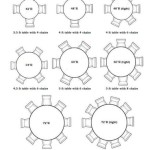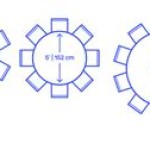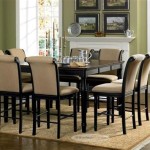Antique Glass Lamp Shades for Table Lamps: A Guide to Identification, Appreciation, and Restoration
Antique glass lamp shades represent a fascinating intersection of art, design, and functionality. These shades, designed for use on table lamps, offer a glimpse into past eras, reflecting the aesthetic sensibilities and technological advancements of their time. Understanding the nuances of antique glass lamp shades, including their materials, manufacturing techniques, styles, and preservation, enhances appreciation and informs responsible ownership.
The allure of antique glass lamp shades lies in their ability to transform ordinary table lamps into unique decorative pieces. Unlike mass-produced modern shades, antique examples often exhibit handcrafted details, artistic flair, and a patina of age that cannot be replicated. The interplay of light and color through intricately designed glass creates a warm and inviting ambiance, enriching any interior space.
Identifying Antique Glass Lamp Shades
Accurately identifying antique glass lamp shades requires a multi-faceted approach, considering several key characteristics. The first step involves examining the glass itself, noting its color, clarity, and overall condition. Antique glass often contains imperfections such as bubbles, striations, or slight variations in thickness, which are indicative of older manufacturing processes. Modern glass, produced with greater precision, typically lacks these characteristics.
The color of the glass provides valuable clues to its age and origin. Certain colors were more prevalent during specific periods. For example, Vaseline glass, characterized by its distinctive uranium content and greenish-yellow hue, was particularly popular in the late 19th and early 20th centuries. Similarly, opalescent glass, featuring milky white or colored accents, was widely used in Victorian-era lamp shades. Cobalt blue, cranberry red, and emerald green were also common colors in antique glass production.
The decoration of the lamp shade is another crucial aspect to consider. Many antique shades feature intricate designs achieved through various techniques, including hand-painting, etching, mold blowing, and the application of enamel or metallic finishes. Identifying the specific technique used can help determine the age and maker of the shade. For instance, hand-painted floral motifs are characteristic of many Victorian-era shades, while geometric patterns are more commonly found in Art Deco examples.
Examining the fitter rim, the part of the shade that attaches to the lamp base, is essential. The fitter rim's size and shape must correspond with the lamp's shade holder. Look for markings or labels on the fitter rim, which may provide information about the manufacturer or patent number. These markings can be invaluable for tracing the shade's history and authenticating its age. However, the absence of markings does not necessarily indicate that a shade is not antique; many older shades were never marked.
Styles and Designs of Antique Glass Lamp Shades
Antique glass lamp shades encompass a wide array of styles and designs, reflecting the evolving tastes and artistic movements of different eras. Victorian-era shades often feature elaborate ornamentation, intricate floral patterns, and rich colors. These shades typically exhibit a high degree of craftsmanship, with meticulous attention to detail. Common motifs include roses, lilies, and other natural elements, often rendered in vibrant enamels or hand-painted details. Fringes and beaded embellishments were also popular additions to Victorian lamp shades.
Art Nouveau shades, popular from the late 19th century to the early 20th century, are characterized by their flowing lines, organic forms, and nature-inspired motifs. These shades often feature stylized depictions of flowers, leaves, insects, and other natural elements, rendered in iridescent glass or with enamel accents. Favrile glass, developed by Louis Comfort Tiffany, is a prime example of Art Nouveau glass, known for its shimmering surfaces and vibrant colors. Tiffany lamp shades are highly sought after by collectors and represent some of the finest examples of Art Nouveau design.
The Art Deco period, spanning the 1920s and 1930s, saw a shift towards more geometric and streamlined designs. Art Deco lamp shades often feature bold geometric patterns, stylized motifs, and a focus on symmetry and clean lines. Common materials include frosted glass, etched glass, and glass with metallic accents. Colors such as black, gold, silver, and chrome were frequently used to create a sleek and modern aesthetic. Art Deco shades often incorporate elements of Egyptian, Mayan, and other exotic cultures, reflecting the era's fascination with global influences.
Mid-Century Modern shades, popular from the 1940s to the 1960s, are characterized by their simplicity, functionality, and use of new materials and technologies. These shades often feature asymmetrical shapes, organic forms, and a focus on clean lines. Common materials include fiberglass, plastic, and molded glass in simple, often atomic, designs. Colors such as pastel hues, earth tones, and bold primary colors were frequently used to create a contemporary and casual aesthetic. Mid-Century Modern shades often reflect the era's optimism and embrace of technological advancements.
Caring for and Restoring Antique Glass Lamp Shades
Proper care and maintenance are essential for preserving the beauty and integrity of antique glass lamp shades. Regular cleaning helps to remove dust, dirt, and grime that can accumulate over time, dulling the glass and obscuring its details. Use a soft, damp cloth to gently wipe the surface of the shade, avoiding harsh chemicals or abrasive cleaners that could damage the glass or its finish.
For more stubborn dirt or stains, a mild soap solution can be used. Mix a small amount of mild dish soap with warm water and gently apply it to the affected area with a soft cloth. Rinse thoroughly with clean water and dry with a lint-free cloth. Avoid immersing the entire shade in water, as this could damage the fitter rim or other delicate components.
Repairing damaged antique glass lamp shades requires specialized skills and knowledge. Cracks, chips, and breaks should be addressed by a professional conservator who has experience working with antique glass. Attempting to repair these damages yourself could cause further harm to the shade, diminishing its value and authenticity. Professional conservators use specialized techniques and materials to repair glass without compromising its integrity, ensuring that the restoration is both aesthetically pleasing and historically accurate.
When storing antique glass lamp shades, it is essential to protect them from damage. Wrap each shade individually in acid-free tissue paper or bubble wrap and store it in a sturdy box or container. Avoid stacking shades on top of each other, as this could cause them to crack or break. Store the box in a cool, dry place away from direct sunlight and extreme temperature fluctuations. Sunlight can fade the colors of the glass, while temperature fluctuations can cause it to expand and contract, leading to cracks or other damage. Proper storage practices will help to ensure that your antique glass lamp shades remain in good condition for generations to come.
Replacing a damaged fitter rim requires careful consideration. It is often recommended to seek the assistance of a qualified lamp repair or restoration professional. The fitter rim's dimensions, material, and method of attachment must match the original to ensure a proper fit and maintain the shade's authentic appearance. Incorrectly installed fitter rims can damage the lamp base or make the shade unstable.
When considering the use of antique glass lamp shades on modern table lamps, ensuring compatibility is crucial. The fitter rim size must match the lamp's shade holder, and the shade's weight should be appropriate for the lamp base to prevent tipping. Additionally, the style of the shade should complement the lamp base to create a harmonious aesthetic. While antique shades can add character and charm to modern lamps, careful consideration is necessary to avoid creating a mismatched or unbalanced look.

White Glass Lamp Shade 10 Inch Paxton Hardware

Antique Glass Lamp Shades For Table Lamps A Stylish Nod To The Past In 2024 Shade

Green Tree Lindsay Art Glass Lamp With Lighted Base Amber Mica Shade Maidenhair Fern Sue Johnson Custom Lamps Shades

Lampshade On Vintage Base Delphi Artist Gallery Stained Glass Lamp Shades Light Lamps

Unique Table Lamp Shades Bases Sue Johnson Custom Lamps

Sunflower Tiffany Lamp Leadglass Stained Glass Shade Crystal Bead Antique Lampshade Bedside Table Jarri Lights

Brass And Glass Lamp Panel Shade Vintage Table Etsy Singapore

Reserved Vintage Amber Globe Lamp Nightlight Bottom Etsy Antique Shades Diy Shade Victorian Lamps

Reverse Hand Painted Lamps Tiffany Style Lamp Glass Table Light Illumination Fixture Made In Com

Vintage Hardware Lighting Art Deco Table Lamps Katherine Series With Leaded Glass Shades 577 Ltl Fp








